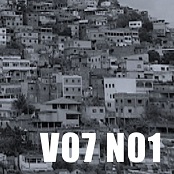Abstract
This article presents a strategy in which urban blocks of buildings are adopted as the unit for renovation projects of built-up neighborhoods. The renovation of buildings and neighborhoods in order to achieve sustainability is a common practice in many cities and has been subject of various studies presented in the literature on urban renewal. In this paper, the renovation of an apartment building in Rio de Janeiro, Brazil, focusing on sustainability and quality of life, brought about a change in scale, from building to urban block in the investigation. During the process of surveying the case in question, the uniformity of the buildings of Copacabana, the neighborhood chosen for the study, stood out. The majority of buildings use similar construction techniques, are 50 or more years old, have 10 to 12 floors and have courtyards in the center of the urban block. In most cases too, no gaps exist between buildings. The change in scale for renovation projects from single buildings to city blocks has important advantages. Renovation administration can be unified, greater financial and political cohesion can be achieved and infrastructure and services can be consolidated, among other benefits. The Smart Grid and Smart Cities concepts can be adopted for the existing buildings as well as future constructions within a block, since they are independent and can be integrated into complementary projects. In this study, the renovation projects considered: ground floors, basements and rooftops as connecting points for the development of a consolidated design. Selected solutions, made possible by adopting urban blocks as building units, are demonstrated, including their strategic potential.References
BEATLEY, T. Biophilic Cities Project. Disponível em: <http://biophiliccities.org/what-are-biophilic-cities/>. Acesso em: 04 jan. 2016.
BEZERRA, M. M.. Renovação da Quadra Urbana para a Sustentabilidade: Desafios e Soluções. 2013. Tese (Doutorado em Arquitetura e Urbanismo) – Pontifícia Universidade Católica do Rio de Janeiro, Rio de Janeiro.
CADERMAN, D.; CADERMAN, R. G. O Rio de Janeiro nas Alturas. Rio de Janeiro: Mauad, 2004.
CADERMAN, R. G. Por dentro de Copacabana: descobrindo os espaços livres do bairro. 2010. Dissertação (Mestrado em Arquitetura) - Universidade Federal do Rio de Janeiro Programa de Pós-graduação em Arquitetura PROARQ, Rio de Janeiro.
CEOTTO, L. H. Construção Civil e o Meio Ambiente. Notícias da Construção, São Paulo, nov. 2006.
CORBELLA, O.; YANNAS, S. Em busca de uma Arquitetura Sustentável para os Trópicos: Conforto Ambiental. Rio de Janeiro: Revan, 2009.
CZAJKOWSK, J. Guia da Arquitetura Moderna no Rio de Janeiro. Rio de Janeiro: Casa da Palavra, 2000.
DESPOMMIER, D. The Vertical Farms. United States: St. Martin’s Press, 2010.
GALVIN, R. Why German homeowners are reluctant to retrofit. Building Research & Information, Germany, 2014. v 42. issue 4. p. 398-408.
GHAFURIAN, R.; GHARAVI, H. Smart Grid: The Electric Energy System of the Future. Proceedings of the IEEE - Institute of Electrical and Electronics Engineers. Vol. 99, No. 6, June 2011.
GIEBELER, G. et al.. Refurbishment Manual: Maintenance, Conversions, Extensions. Basel: Birkhauser, 2009.
GRAM-HANSSEN, K. Retrofitting owner-occupied housing: remember the people. Building Research & Information, Germany. 2014. v 42. issue 4.p. 393-397.
HAUSLADEN, G.; TICHELMAN, K. Interiors Construction Manual. Munich: Edition Detail, 2010.
NEWMAN, P. Interview with Peter Newman, Author of Resilient Cities: Responding to Peak Oil and Climate Change. The American Society of Landscape Architects. Disponível em: <https://www.asla.org/ContentDetail.aspx?id=23940/>. Acesso em 04 jan. 2016.
SECOVI. Panorama do Mercado Imobiliário do Rio de Janeiro 2011. Rio de Janeiro: Secovi, 2012.
VAZ, L. F. Modernidade e Moradia: Habitação Coletiva no Rio de Janeiro séculos XIX e XX. Rio de Janeiro: 7 Letras, 2012.
VELHO, G. A Utopia Urbana: Um Estudo de Antropologia Social. Rio de Janeiro: Jorge Zahar Editora, 2002.
I accept that PARC Research in Architecture and Building Construction journal perform, on the original file approved for publication, revisions and modifications in orthoghaphic, grammar and standard issues.
I give to PARC Research in Architecture and Building Construction journal the rights of first publication of the revised version of my paper, licensed under the 'Creative Commons Attribution' license (which allows sharing the work with the recognition of first authorship and publication in this journal).

